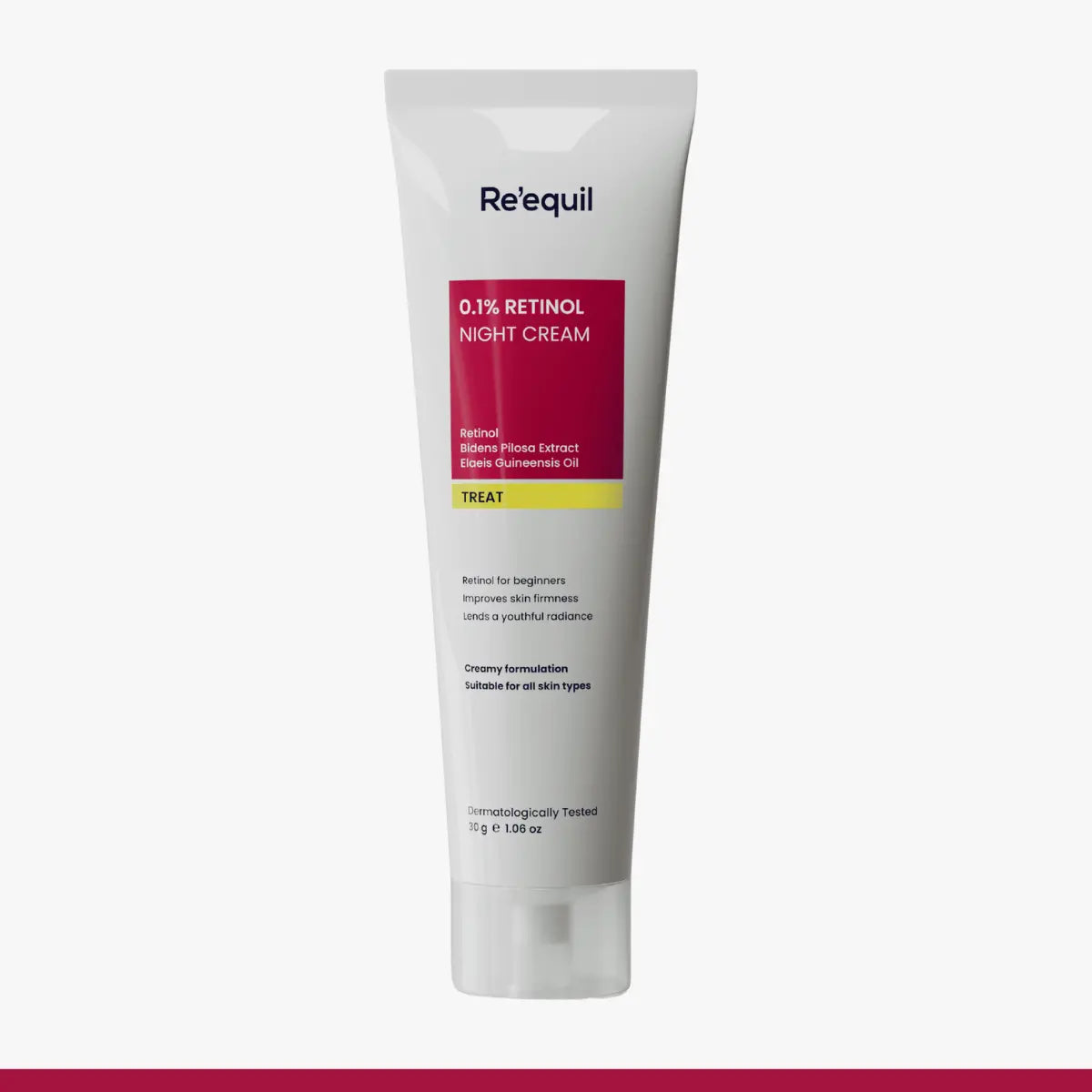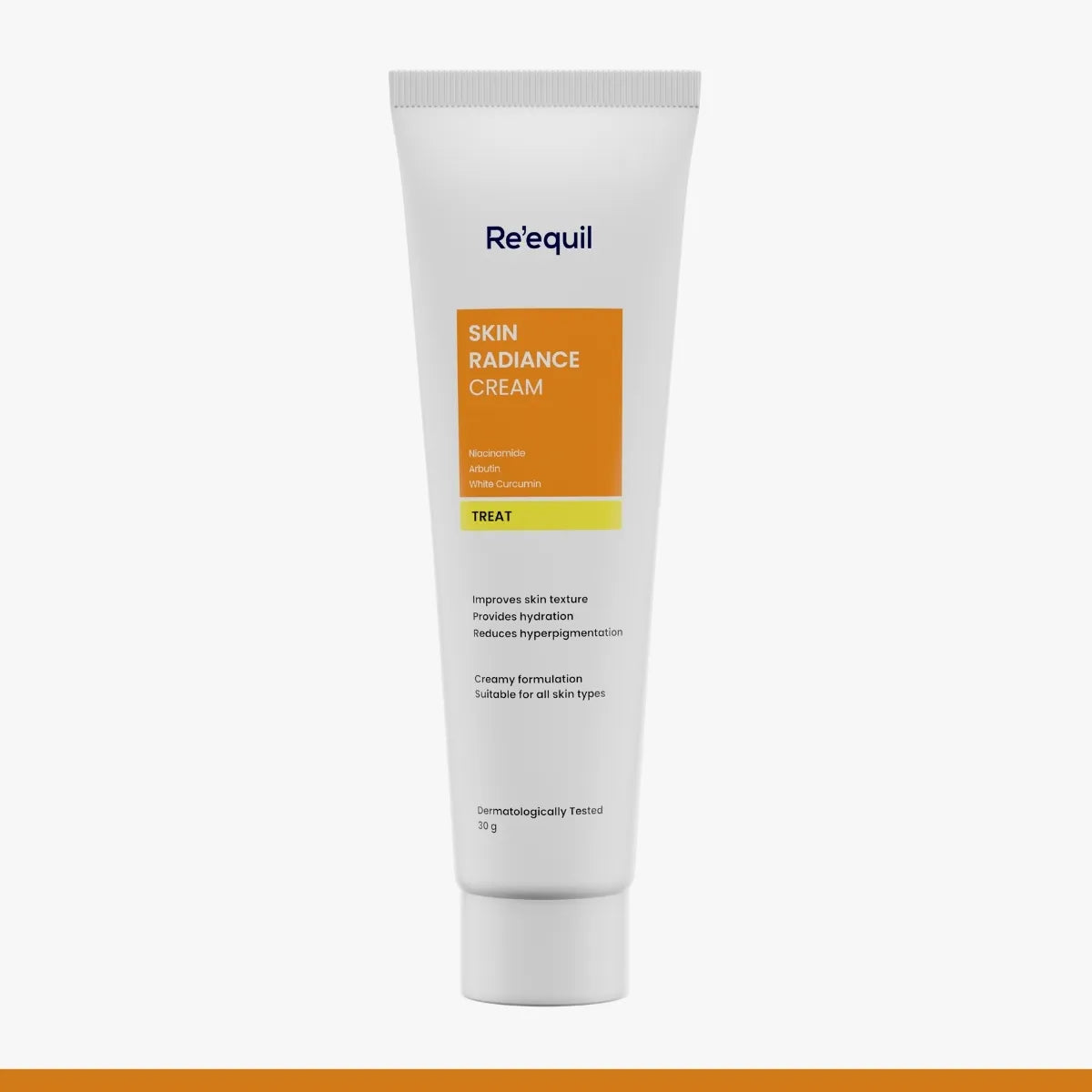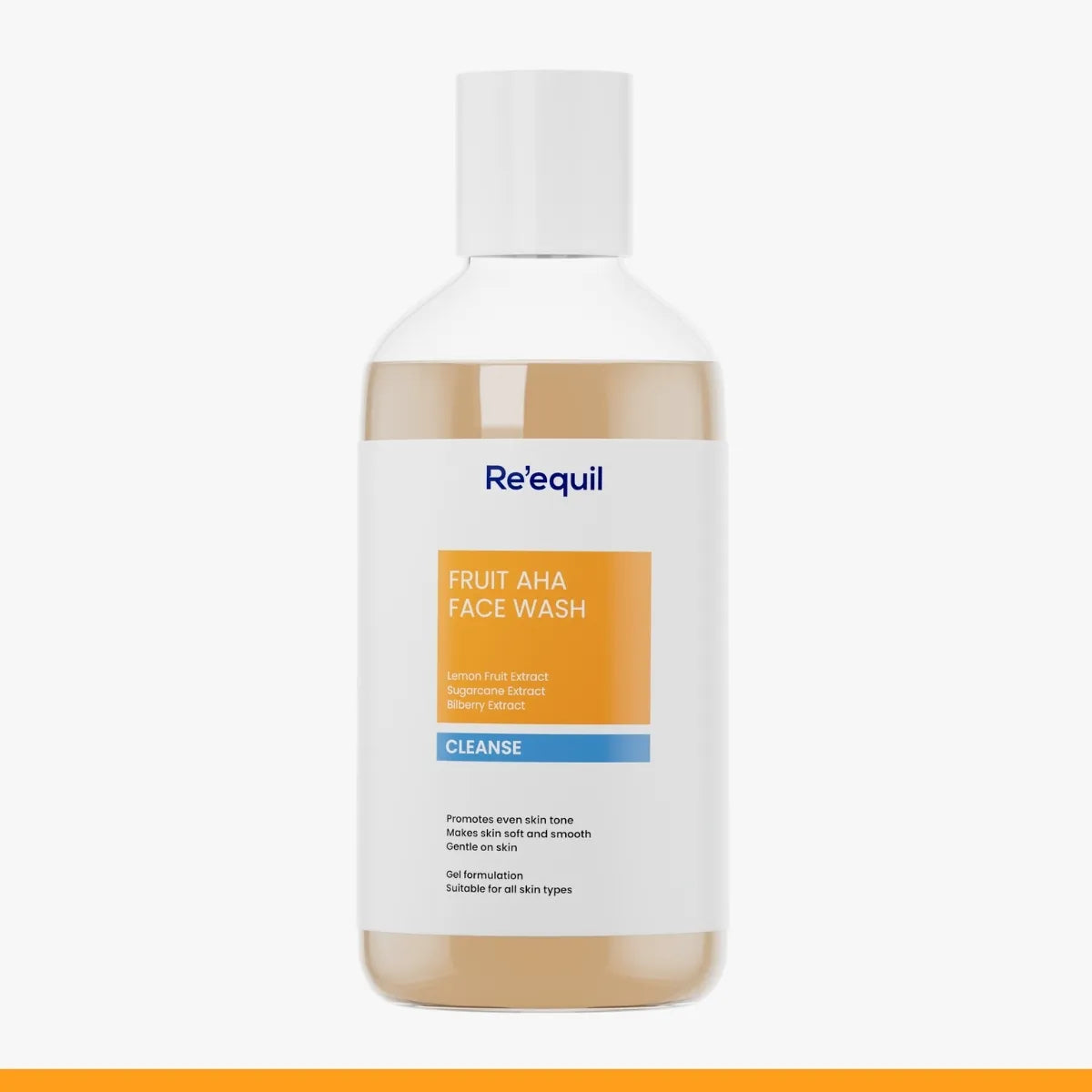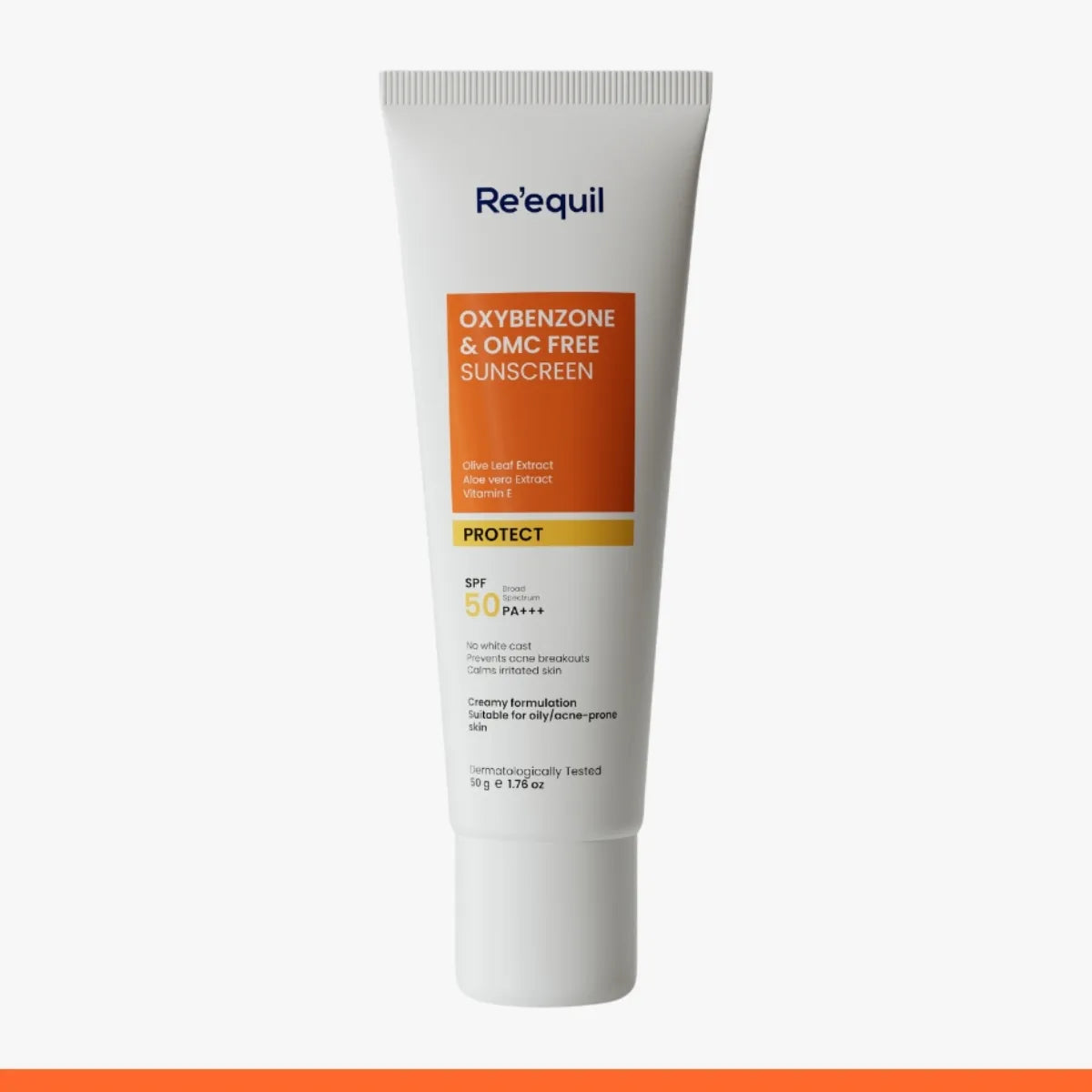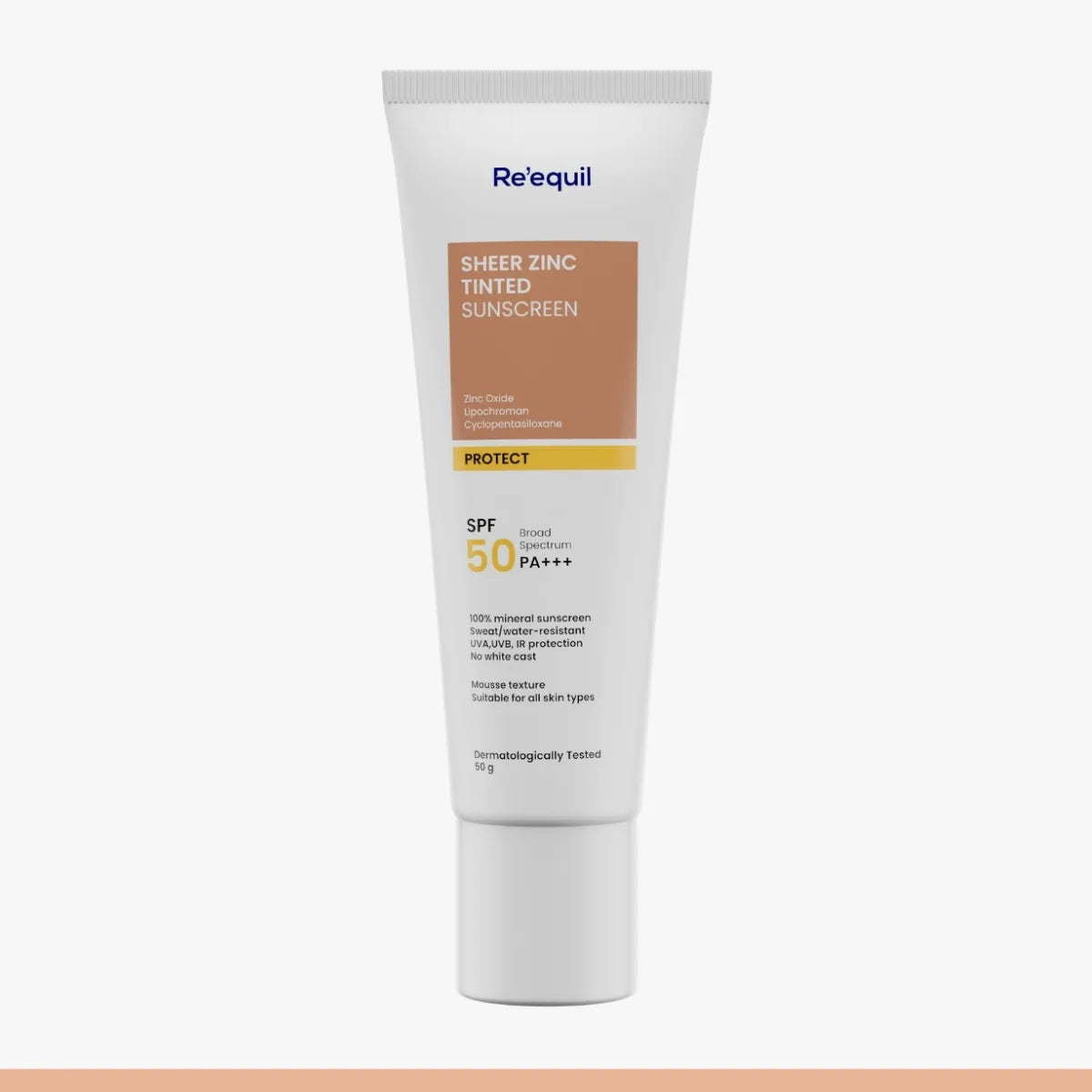Applying sunscreen regularly is one of the simplest—and the most effective—ways to maintain your skin’s health and appearance.
No matter what age you are—you can always benefit from sunscreen.
It prevents sunburn, reduces the risk of skin cancer, prevents premature ageing, reduces hyperpigmentation, etc.
You can say even sunscreen is the main character of your skincare routine.
But, have you ever wondered what type of sunscreen is right for your skin?
There are two types of sunscreens available—chemical and mineral sunscreen.
When discussing these two types of sunscreens, questions such as "Which one is more effective?" or "Which one stays longer on skin and offers better UV protection?" are bound to come up.
Well, this blog answers all the questions. Let’s get the low down on everything you need to know about mineral vs chemical sunscreen.
What is mineral sunscreen?
Mineral sunscreen, commonly referred to as inorganic or physical sunscreen, works by reflecting or scattering UV rays—they contain active ingredients that are metal oxides—such as zinc oxide or titanium dioxide.
When you apply mineral sunscreen on your body or face, they basically work as sheets of metal and oxygen—or you can say they are opaque in nature (not see-through).
Thus, it makes sense that mineral sunscreen doesn’t absorb into your skin—it rather sits on top of your skin.
Moreover, mineral sunscreens are better for individuals with sensitive skin, acne, or skin conditions like eczema. Such sunscreens are usually non-irritating and do not cause any adverse effects.
The 2019 FDA report says that zinc oxide and titanium dioxide are GRASE (generally recognized as safe and effective) for use in sunscreens.
A 2019 study says that due to the reflective properties, mineral sunscreens are also called sunblocks, a term less used nowadays for sunscreen.
However, there is one challenge that many face with any mineral sunscreen—that it may leave behind an excessive shine or a white cast—which usually limits the cosmetic acceptance of mineral sunscreens.
What is chemical sunscreen?
Chemical sunscreen forms a protective shield on your skin to absorb UV rays. When applied, its ingredients penetrate the epidermal layer.
Upon contact with UV rays, chemical sunscreen converts the rays into harmless heat via a chemical reaction, preventing them from reaching the epidermal layer. The heat is then released from your skin.
This conversion is crucial because you don't want UV rays to reach the epidermal layer of your skin, where your melanin is.
If melanin absorbs UV rays, it can cause serious damage like hyperpigmentation and accelerate the skin ageing process.
Chemical sunscreens generally have the following ingredients -
- Oxybenzone
- Octinoxate
- Octisalate
- Avobenzone
Chemical sunscreens are also cosmetically accepted as they blend easily with makeup and don’t usually leave a white cast. They absorb instantly and don’t make your face look greasy or shiny.
However, some people are hesitant to use chemical sunscreen because the ingredients in it can cause an adverse reaction—especially if the sunscreen comes in contact with the eyes.
Moreover, the FDA report does not classify the chemical sunscreen ingredients as GRASE (generally recognized as safe and effective).
What are the key differences between a chemical and mineral sunscreen?
Here’s a breakdown of the differences between a chemical and mineral sunscreen—knowing them can help you figure out which one is better for your skin type and concerns.
|
Chemical sunscreens |
Mineral sunscreens |
|
Absorbs UV rays |
Reflects UV rays |
|
Contains carbon-based ingredients like oxybenzone, avobenzone, etc. |
Contains inorganic compounds like zinc oxide and titanium dioxide |
|
Thinner texture, spreads evenly and gets absorbed instantly |
Has a thicker texture, difficult to spread evenly on the face |
|
Takes about 20 minutes after application to provide protection from UV rays |
Provides immediate protection |
|
More transparent finish, leaves no white cast |
Opaque in nature, can leave an extra shine and white cast |
|
Can cause an allergic reaction to some individuals and clog the pores |
Considered safe for all skin types and recommended by dermatologist to individuals with sensitive, acne-prone skin |
Chemical vs mineral sunscreen: which one protects the skin from UV rays for longer?
Both mineral and chemical sunscreens offer the same duration of sun protection.
While it may seem that chemical sunscreens, because they penetrate the skin, offer longer-lasting UV protection than mineral sunscreens.
But that is not the case—how long sunscreen stays on your skin depends on your activity throughout the day, such as if you are swimming or sweating—along with how much sunscreen you apply.
Which one is more suitable for individuals with acne?
Mineral sunscreen ingredients are typically more suitable for acne-prone and sensitive skin.
Zinc oxide and titanium dioxide are among the safest sunscreen ingredients. They are gentle on the skin and do not cause adverse reactions.
Additionally, mineral sunscreen ingredients are non-comedogenic, meaning they won't clog your pores.
Zinc oxide, in particular, can help improve acne by fighting germs, and healing wounds, and acne lesions. It also contributes to sebum regulation, making mineral sunscreens an ideal choice for individuals with oily skin.
Which one is better, chemical or mineral sunscreen?
Many of the points discussed in this blog suggest that mineral sunscreen is superior to chemical sunscreen.
However, it is all about your preference and skin type.
If appearance is not your biggest concern and you are okay with a little white cast or extra shine on your face—you can go with the mineral sunscreen. It provides broad-spectrum protection and contains inorganic ingredients.
On the other hand, if you are an individual who usually wears makeup, chemical sunscreen is a better option for you since it blends easily and does not leave behind any greasiness or white cast.
In terms of sun protection, there really isn’t much difference between mineral and chemical sunscreen—both effectively protect your skin from UV rays.
And if you can’t seem to choose between a mineral or chemical sunscreen—you can go ahead with a hybrid sunscreen—it contains both inorganic and organic ingredients.
